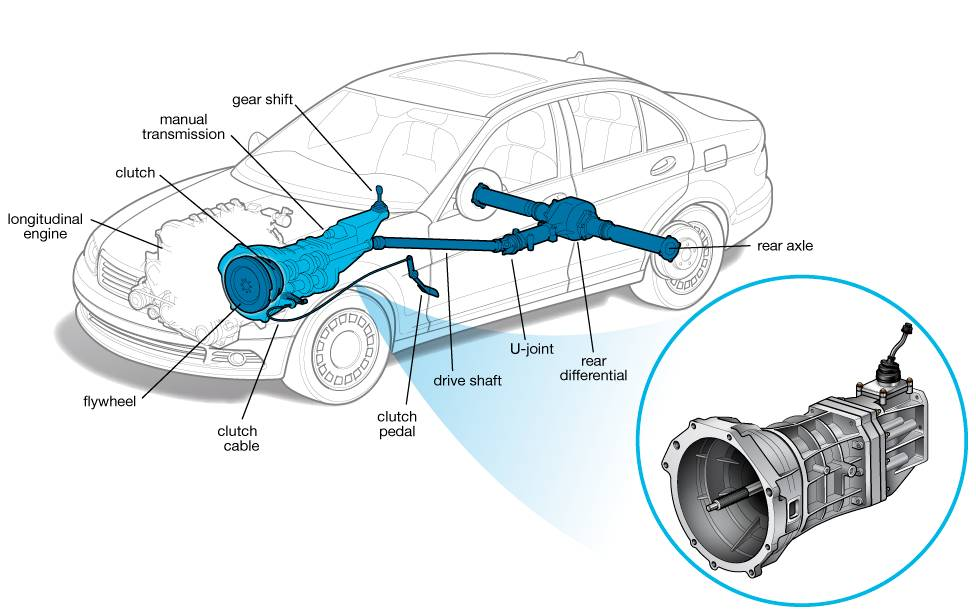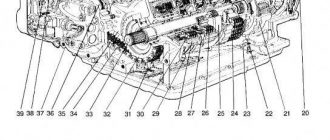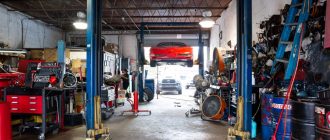Transmission in a Car
A transmission is a mechanical device that transfers power from the engine to the wheels of a car. It is responsible for changing the speed and torque of the engine to match the driving conditions. Transmissions are typically located between the engine and the driveshaft, and they can be either manual or automatic.
Manual Transmissions
Manual transmissions require the driver to manually shift gears by moving a gear lever. This type of transmission is more efficient than automatic transmissions, but it can be more difficult to drive. Manual transmissions are typically found in sports cars and other performance vehicles.
Automatic Transmissions
Automatic transmissions shift gears automatically, based on the speed of the engine and the position of the accelerator pedal. This type of transmission is easier to drive than a manual transmission, but it is also less efficient. Automatic transmissions are typically found in passenger cars and other vehicles that are designed for everyday driving.
How a Transmission Works
A transmission consists of a series of gears that are arranged in different ratios. When the driver changes gears, the transmission changes the ratio of the gears, which in turn changes the speed and torque of the engine.
The gears in a transmission are typically arranged in a set of parallel shafts. The input shaft is connected to the engine, and the output shaft is connected to the driveshaft. The gears on the input and output shafts are meshed together, and the ratio of the gears determines the speed and torque of the output shaft.
When the driver shifts gears, the transmission moves a sliding collar that engages a different set of gears. This changes the ratio of the gears, which in turn changes the speed and torque of the output shaft.
Types of Transmissions
There are many different types of transmissions available, each with its own advantages and disadvantages. Some of the most common types of transmissions include:
* Manual transmissions: Manual transmissions require the driver to manually shift gears by moving a gear lever. This type of transmission is more efficient than automatic transmissions, but it can be more difficult to drive. Manual transmissions are typically found in sports cars and other performance vehicles.
* Automatic transmissions: Automatic transmissions shift gears automatically, based on the speed of the engine and the position of the accelerator pedal. This type of transmission is easier to drive than a manual transmission, but it is also less efficient. Automatic transmissions are typically found in passenger cars and other vehicles that are designed for everyday driving.
* Continuously variable transmissions (CVTs): CVTs are a type of automatic transmission that uses a belt or chain to transfer power from the engine to the wheels. CVTs do not have gears, so they can provide a smooth, seamless ride. CVTs are typically found in hybrids and other fuel-efficient vehicles.
* Dual-clutch transmissions (DCTs): DCTs are a type of automatic transmission that uses two clutches to shift gears. DCTs are more efficient than traditional automatic transmissions, and they can also provide a sportier driving experience. DCTs are typically found in high-performance vehicles.
Choosing the Right Transmission
The type of transmission that is right for you will depend on your driving needs and preferences. If you are looking for a sporty driving experience, a manual transmission may be a good option. If you are looking for a more convenient and fuel-efficient option, an automatic transmission may be a better choice.
Here are some factors to consider when choosing a transmission:
* Your driving habits: If you do a lot of stop-and-go driving, an automatic transmission may be a better choice. If you do a lot of highway driving, a manual transmission may be a better option.
* Your vehicle: The type of vehicle you drive will also affect your choice of transmission. Sports cars and other performance vehicles are typically equipped with manual transmissions. Passenger cars and other vehicles that are designed for everyday driving are typically equipped with automatic transmissions.
* Your budget: Manual transmissions are typically less expensive than automatic transmissions. However, automatic transmissions can be more fuel-efficient, which can save you money in the long run.
Maintaining Your Transmission
Transmissions require regular maintenance to keep them functioning properly. Here are some tips for maintaining your transmission:
* Check the transmission fluid regularly: The transmission fluid lubricates the gears and other components of the transmission. It is important to check the transmission fluid level and condition regularly, and to change the fluid according to the manufacturer’s recommendations.
* Avoid overloading your vehicle: Overloading your vehicle can put strain on the transmission. Avoid carrying heavy loads or towing trailers that are too heavy for your vehicle.
* Have your transmission serviced regularly: A transmission is a complex piece of machinery, and it is important to have it serviced regularly by a qualified mechanic. Regular service can help to identify and fix problems before they become major.
By following these tips, you can help to keep your transmission functioning properly for many years to come.






